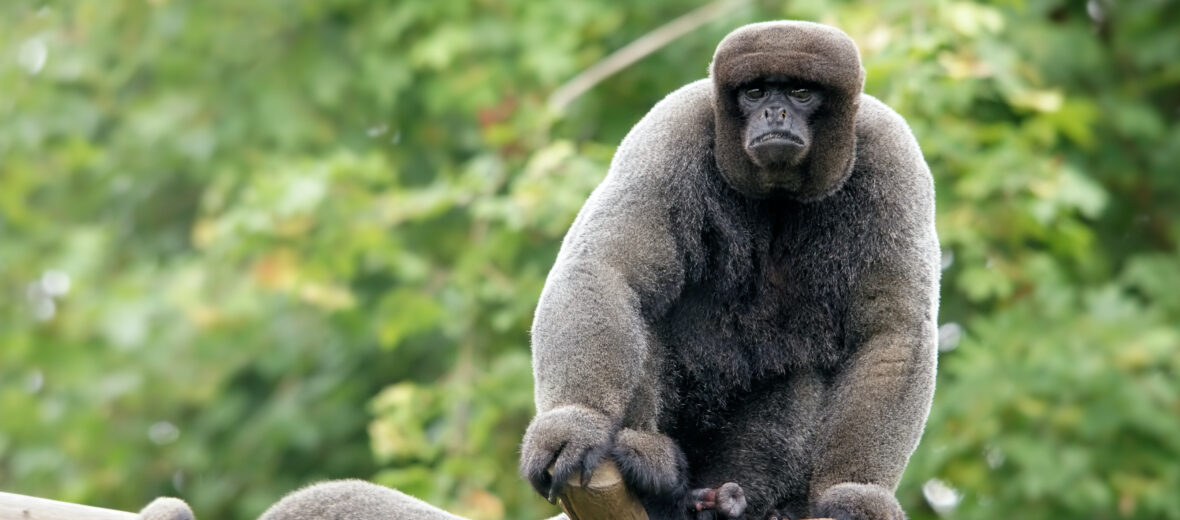
The woolly monkey is found throughout Ecuador, Colombia, Peru, Brazil, and sections of Venezuela. There are 4 known species of that are found in South America. They are the brown, the Colombian, the grey, and the silvery. These New World monkeys get their name from their soft, thick, and curly fur. These monkeys are listed from Vulnerable to Critically Endangered by the IUCN.
First the Stats…
Scientific name: Lagothrix
Weight: Up to 20 lbs.
Length: Up to 24 inches, plus their 24+ inch long tail
Lifespan: Up to 30 years
Now on to the Facts!
1.) These monkeys are arboreal (live in trees).
2.) When they do travel to the ground, they walk on their hind legs, like humans, and can run at speeds of up to 30 mph (when running on all fours). When walking upright, they use their tail and arms as balance.
3.) They are diurnal (active during the day), like other monkeys.
4.) Woolly monkeys live in large family groups called troops. They can be up to 45 monkeys strong.
5.) Their primary predators are jaguars, ocelots, eagles, and caimans.
But wait, there’s more on the woolly monkey!
6.) Woollies eat fruit, nuts, seeds, nectar, insects, reptiles, small birds, and even rodents. This makes them omnnivores (eat plant and animal matter).
7.) Hierarchy is established during play time and overall dominance is sorted out via aggressive behaviors.
Did you know…?
A group of woolly monkeys is called a troop, tribe, cartload, barrel, or wilderness.
8.) Like many other primates, new and old world monkeys alike, the woolly monkey is promiscuous (mate with multiple partners).
9.) Pregnancy lasts between 7 – 8 months and yields 1 baby.
10.) The baby will depend on its mother’s milk for up to 1 year.
Now a Short Woolly Monkey Video!
Also, check out the Critter Science YouTube channel. Videos added frequently!
Want to suggest a critter for me to write about? Let me know here.



